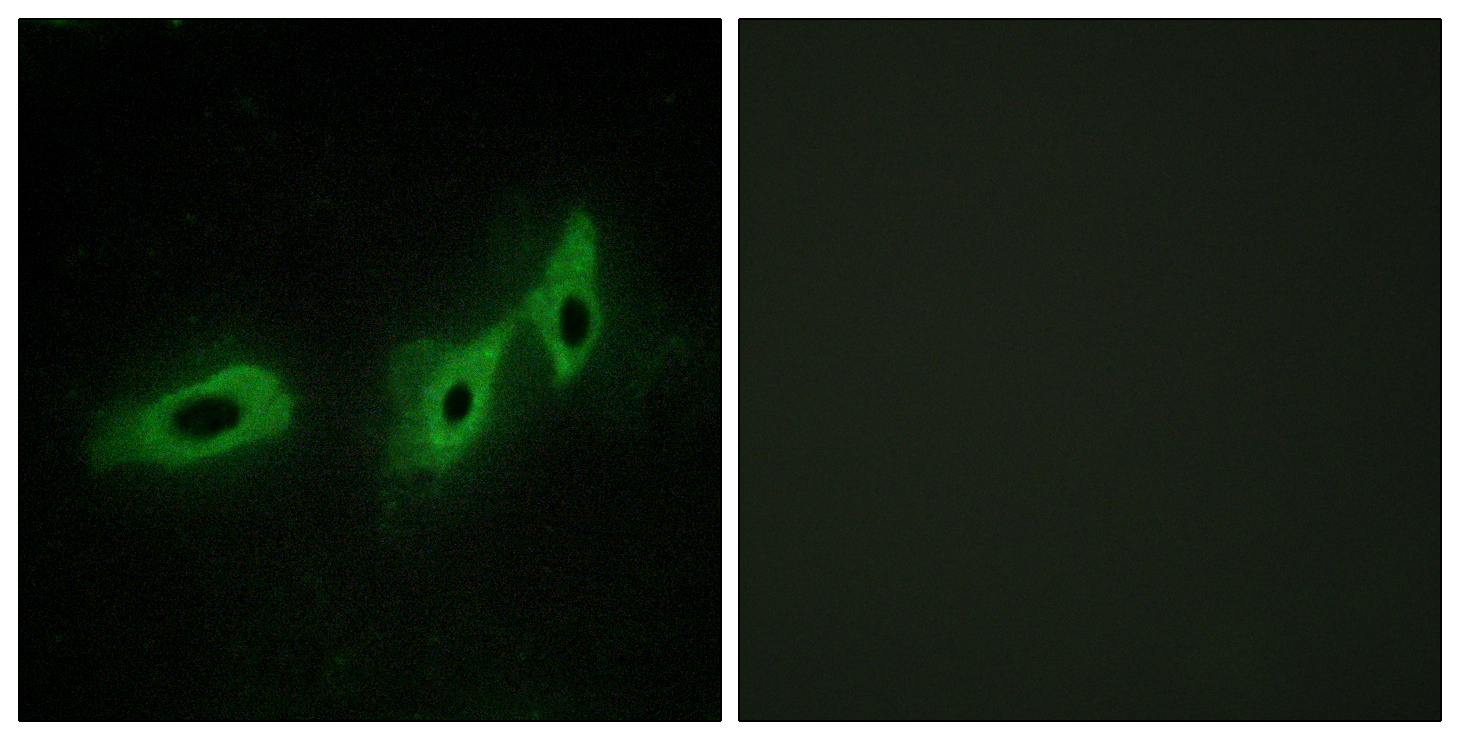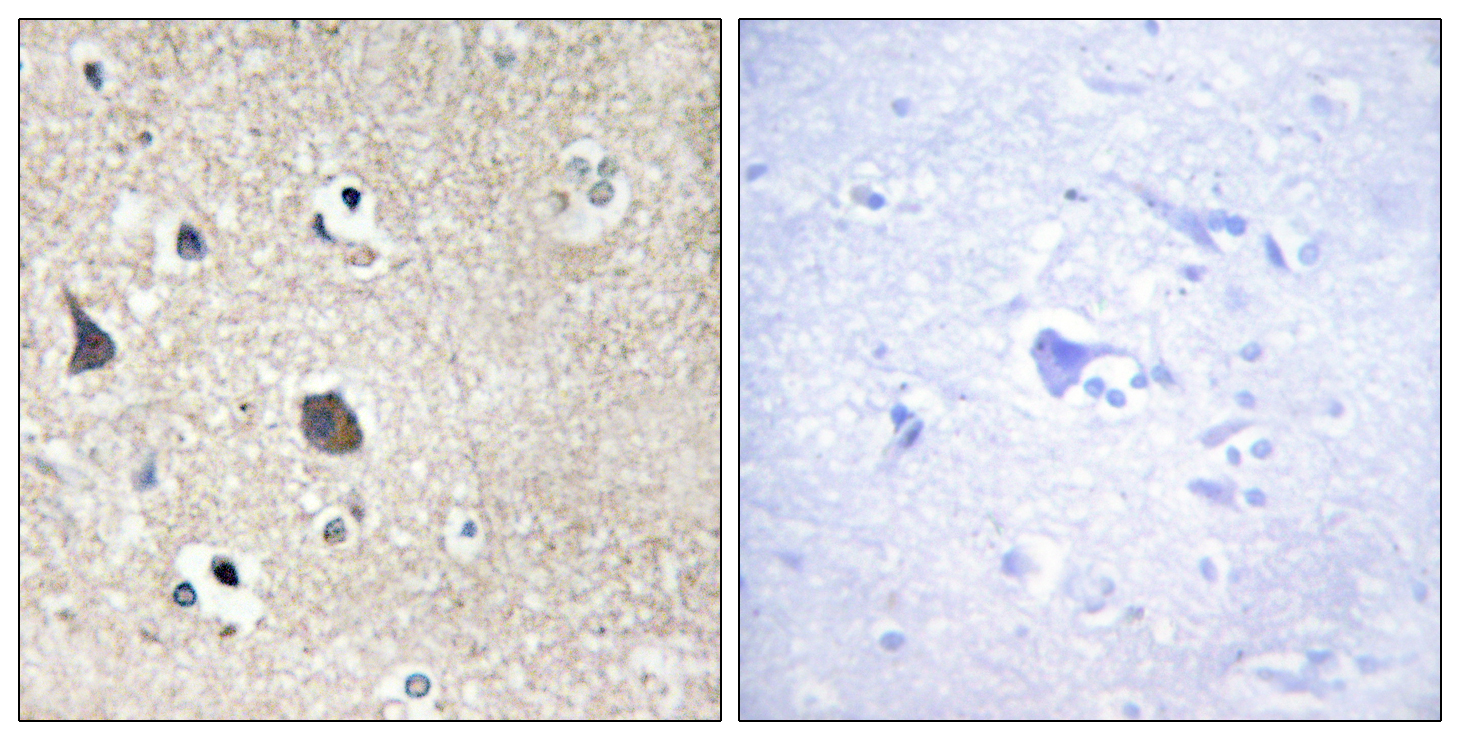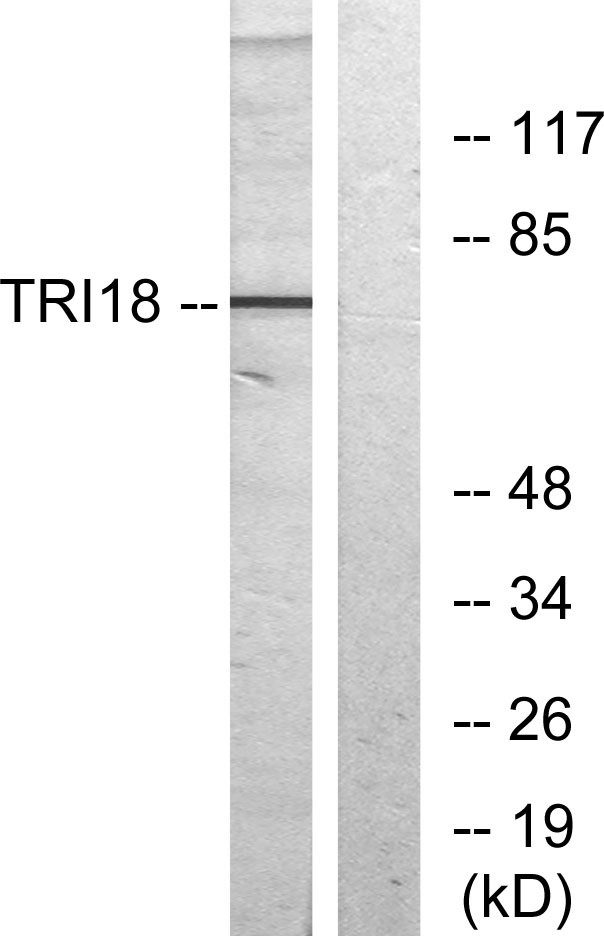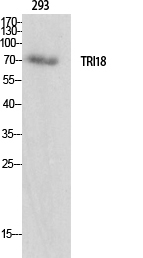产品名称
Midline-1 Rabbit Polyclonal Antibody
别名
MID1; FXY; RNF59; TRIM18; XPRF; Midline-1; Midin; Midline 1 RING finger protein; Putative transcription factor XPRF; RING finger protein 59; Tripartite motif-containing protein 18
存储缓冲液
Liquid in PBS containing 50% glycerol, 0.5% BSA and 0.02% New type preservative N.
Human Gene Link
http://www.ncbi.nlm.nih.gov/sites/entrez?db=gene&term=4281
Human Swissprot No.
O15344
Human Swissprot Link
http://www.uniprot.org/uniprotkb/O15344/entry
Mouse Gene Link
http://www.ncbi.nlm.nih.gov/sites/entrez?db=gene&term=17318
Mouse Swissprot No.
O70583
Mouse Swissprot Link
http://www.uniprot.org/uniprot/O70583
Rat Gene Link
http://www.ncbi.nlm.nih.gov/sites/entrez?db=gene&term=54252
Rat Swissprot Link
http://www.uniprot.org/uniprot/P82458
免疫原
The antiserum was produced against synthesized peptide derived from human TRI18. AA range:71-120
特异性
Midline-1 Polyclonal Antibody detects endogenous levels of Midline-1 protein.
稀释度
WB 1:500 - 1:2000. IHC 1:100 - 1:300. IF 1:200 - 1:1000. ELISA: 1:40000. Not yet tested in other applications.
宿主
Polyclonal, Rabbit,IgG
背景介绍
midline 1(MID1) Homo sapiens The protein encoded by this gene is a member of the tripartite motif (TRIM) family, also known as the 'RING-B box-coiled coil' (RBCC) subgroup of RING finger proteins. The TRIM motif includes three zinc-binding domains, a RING, a B-box type 1 and a B-box type 2, and a coiled-coil region. This protein forms homodimers which associate with microtubules in the cytoplasm. The protein is likely involved in the formation of multiprotein structures acting as anchor points to microtubules. Mutations in this gene have been associated with the X-linked form of Opitz syndrome, which is characterized by midline abnormalities such as cleft lip, laryngeal cleft, heart defects, hypospadias, and agenesis of the corpus callosum. This gene was also the first example of a gene subject to X inactivation in human while escaping it in mouse. Multiple different transcript variants are generated by alternate splicing; however, t
组织表达
In the fetus, highest expression found in kidney, followed by brain and lung. Expressed at low levels in fetal liver. In the adult, most abundant in heart, placenta and brain.
细胞定位
Cytoplasm . Cytoplasm, cytoskeleton . Cytoplasm, cytoskeleton, spindle . Microtubule-associated. It is associated with microtubules throughout the cell cycle, co-localizing with cytoplasmic fibers in interphase and with the mitotic spindle and midbodies during mitosis and cytokinesis.
信号通路
Ubiquitin mediated proteolysis;
功能
disease:Defects in MID1 are the cause of Opitz syndrome type I (OS-I) [MIM:300000]. OS-I is an X-linked recessive disorder characterized by hypertelorism, genital-urinary defects such as hypospadias in males and splayed labia in females, lip-palate-laryngotracheal clefts, imperforate anus, developmental delay and congenital heart defects. OS-I mutations produce proteins with a decreased affinity for microtubules.,function:May have E3 ubiquitin ligase activity which targets the catalytic subunit of protein phosphatase 2 for degradation.,induction:A retroviral element acts as an alternative tissue-specific promoter for this gene. The LTR of an HERV-E element enhances the expression in placenta and embryonic kidney.,PTM:Phosphorylated on serine and threonine residues.,similarity:Belongs to the TRIM/RBCC family.,similarity:Contains 1 B30.2/SPRY domain.,similarity:Contains 1 COS domain.,similarity:Contains 1 fibronectin type-III domain.,similarity:Contains 1 RING-type zinc finger.,similarity:Contains 2 B box-type zinc fingers.,subcellular location:Microtubule-associated. It is associated with microtubules throughout the cell cycle, co-localizing with cytoplasmic fibers in interphase and with the mitotic spindle and midbodies during mitosis and cytokinesis.,subunit:Homodimer or heterodimer with MID2. Interacts with IGBP1.,tissue specificity:In the fetus, highest expression found in kidney, followed by brain and lung. Expressed at low levels in fetal liver. In the adult, most abundant in heart, placenta and brain.,
纯化
The antibody was affinity-purified from rabbit antiserum by affinity-chromatography using epitope-specific immunogen.




.jpg)
